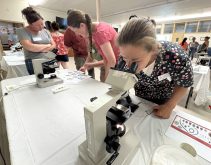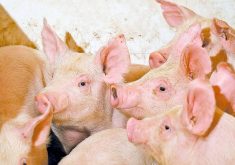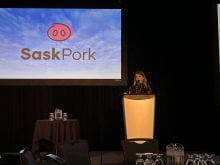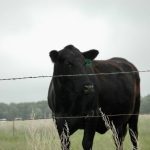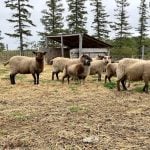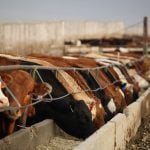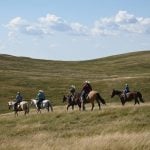The establishment of a provincial animal welfare enforcement agency in 2019 was greeted with cautious optimism by some farm groups. Recent cases involving livestock, however, have highlighted problems with the framework, including a lack of due-process guarantees, insufficient training for inspection officers and a general lack of transparency.
Why it matters: The Provincial Animal Welfare Services Act, as currently written, does not distinguish between pets and commodity animals.
Although a review of Ontario’s animal welfare enforcement process was supported by commodity groups, some are calling for it to happen sooner rather than later. Others think an entirely separate livestock welfare system is required.
Read Also
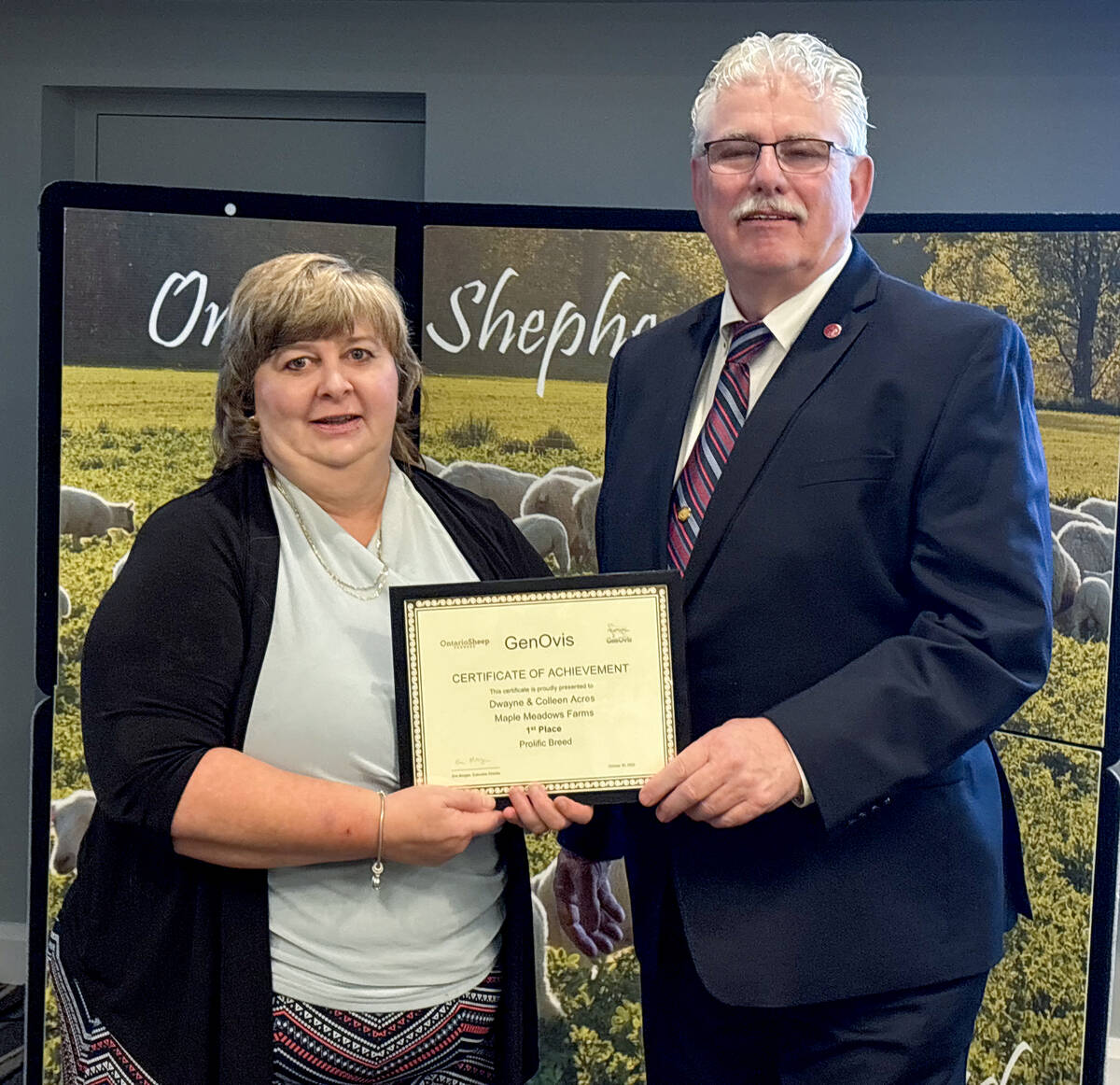
GenOvis awards presented at Ontario Sheep Farmers’ annual meeting
Producers and youth were recognized for their contributions during the Ontario Sheep Farmers’ annual GenOvis and leadership awards.
The Provincial Animal Welfare Services Act (PAWS) was implemented in response to a court ruling that powers wielded by the Ontario Society for the Prevention of Cruelty to Animals (OSPCA) required greater regulation. It is a registered charity that had previously been in charge of animal welfare enforcement.
The OSPCA subsequently stepped away from providing inspection services for both farm and companion animals. PAWS regulations and enforcement capability replaced it, and came into effect Jan. 1, 2020.
Brent Ross, a spokesperson for the Ministry of the Solicitor General, describes Ontario’s animal welfare system as “robust, transparent, and accountable.”
In an Aug. 30 email, Ross said a portion of the province’s 100 animal welfare inspectors have specialized livestock and equine training. These inspectors work with agricultural commodity groups and consult with veterinarians for their knowledge and expertise.
If livestock are seized as part of an animal welfare inspection, PAWS inspectors work with sheltering, boarding and veterinary vendors to provide care for removed animals, he said. They also attend the facilities to ensure compliance with the Standards of Care outlined in the PAWS Act.
Specialized inspectors for agriculture and equines are also available to provide advice and support to inspectors or police.
“The ministry will continue to engage stakeholders, municipal and First Nations partners and the public when updating and developing additional regulations under the PAWS Act to protect animals,” Ross said.
Recent livestock seizures and subsequent court challenges from farmers have spurred questions and frustration surrounding the province’s claim of transparency.

A case involving Peterborough-area beef farmer Walter Ray is a case in point. His 101 cattle, or about half of his herd, were seized and moved to foster care by PAWS inspectors in December 2021. Despite his requests to sell the animals immediately, they were kept in foster care until early May 2022. This eventually incurred an animal care bill of more than $390,000, to be paid by Ray.
Robert Scriven, a Waterloo-based lawyer specializing in agricultural law and litigation on behalf of farmers and farm businesses, represented Ray as he appealed the amount owing.
Although the judge eventually sided with the appellant, Scriven notes a lack of cooperation and transparency from the Crown during the proceedings. It did not reveal who rendered the invoices for livestock boarding and care or the locations where the animals were being kept.
“This case typifies what happens when there’s absolutely zero oversight,” said Scriven. “They cut cheques for $400,000 without checking what industry rates are, without previous cases…They just did whatever they wanted and expected Walter to pay for it.”
Scriven said officers need the ability to make decisions on the ground and noted the need for information and training on what costs are acceptable.
“Even in a civil case I can write to the other side. The fact there was such a lack of willingness to provide information crucial for Walter to defend himself…They froze us out of looking at the cattle. The capacity of PAWS to provide information they wanted to provide, not all the information, that’s a big issue.”
Scriven believes an immediate review of PAWS is necessary. Commodity organizations such as Beef Farmers of Ontario, similarly, have been active on the PAWS file and have published recommendations to remedy some of the issues identified in the Ray case and others.
These include:
- Better training and certification on livestock handling, transportation and other aspects of care codes of practice, as well as Ontario-appropriate cost standards.
- Direct communication between BFO’s Animal Advisory Council and county board members in all livestock welfare cases before the involvement of PAWS.
- A joint effort between BFO and other commodity groups to review the PAWS act for incidents where livestock are involved during enforcement.
Richard Horne, executive director for BFO, emphasizes the need for a better understanding of normal farm practices on the part of inspectors. As with other first responders, training in mental health services should be part of it.
“The hope is we will be able to work collaboratively with the province,” said Horne. “Outcomes are always better when there’s good communication between industry and government.”
Like Scriven, though, he added that timely and transparent two-way communications is a must. Establishing clear standard operating procedures for the escalation of cases – such as how and when the decision to remove animals is made, and the costs associated with moving and housing said animals – is critical.
“There are pieces within the current structure that I think are working well, but we have identified some gaps…I think we’re now at a point where a review is warranted. The point is not to tear down what’s there. We just need to address obvious concerns.”
PAWS has also been on the Ontario Federation of Agriculture’s radar since the OSPCA abdicated its enforcement role in 2019.
Danielle Glac, an animal welfare-focused farm policy analyst with the organization, said the province may need to standardize statements of service by, for example, setting a fee range for boarding and caring for specific types animals, or vetting foster care facilities.
Glac also highlighted potential challenges with training.
Livestock comprise a small fraction of animal welfare calls, she noted. Of that fraction, most pertain to horses. This offers inspectors little opportunity to interact with the farm sector and flex the mental muscles developed by training in livestock handling and codes of practice.
The fact that “livestock” comprise many species and breeds with different characteristics and demeanours adds to the complexity, and could pose a challenge when it comes to officer training. More resources than initially anticipated might, by consequence, be required.
Like Horne, Glac said OFA supports amending PAWS, not scrapping it. The organization worked closely with the province as the Act was developed, and supported the shift to a publicly funded and more accountable animal welfare enforcement system.
Before PAWS took effect in January 2020, OFA also requested the Act be reviewed after three years.
Scriven said PAWS revision was needed yesterday.
“Let’s have some transparency and accountability,” he said. “There are lots of primary producers out there. This is people’s livelihoods we’re talking about.”
A livestock-specific system?
For some, revising PAWS may not be enough and an entirely separate livestock welfare system might be required.
“Pets are pets, but livestock is equity. The word ‘foster homes’ has to be completely eliminated from the act, in my opinion” said John Lunn, advisory counsellor for BFO and the neighbour who helped Ray navigate the appeal process.
“There’s a huge need for welfare services. I’ll never deny that. But you cannot categorize livestock as pets. The act has to be completely written differently for the livestock industry…If you can’t pay your taxes, the government doesn’t walk in and give your property to someone else. They sell it.”
Lunn said the appeal process should also be changed, given he and Ray had five days from the date the cattle were removed (Dec. 19, 2021) to file an appeal through what proved to be a confusing and inefficient system.
Lunn also believes it’s important to ensure the veterinarian who signs the removal order is both licenced and in practice. It might also be better to establish a requirement for more than one veterinarian to be present along with the PAWS inspector and a commodity representative, he said.
“There has to be a third person, a commodity rep, every time that PAWS person goes on that property. The act has to be written in black and white for livestock and consistent across Ontario.”








